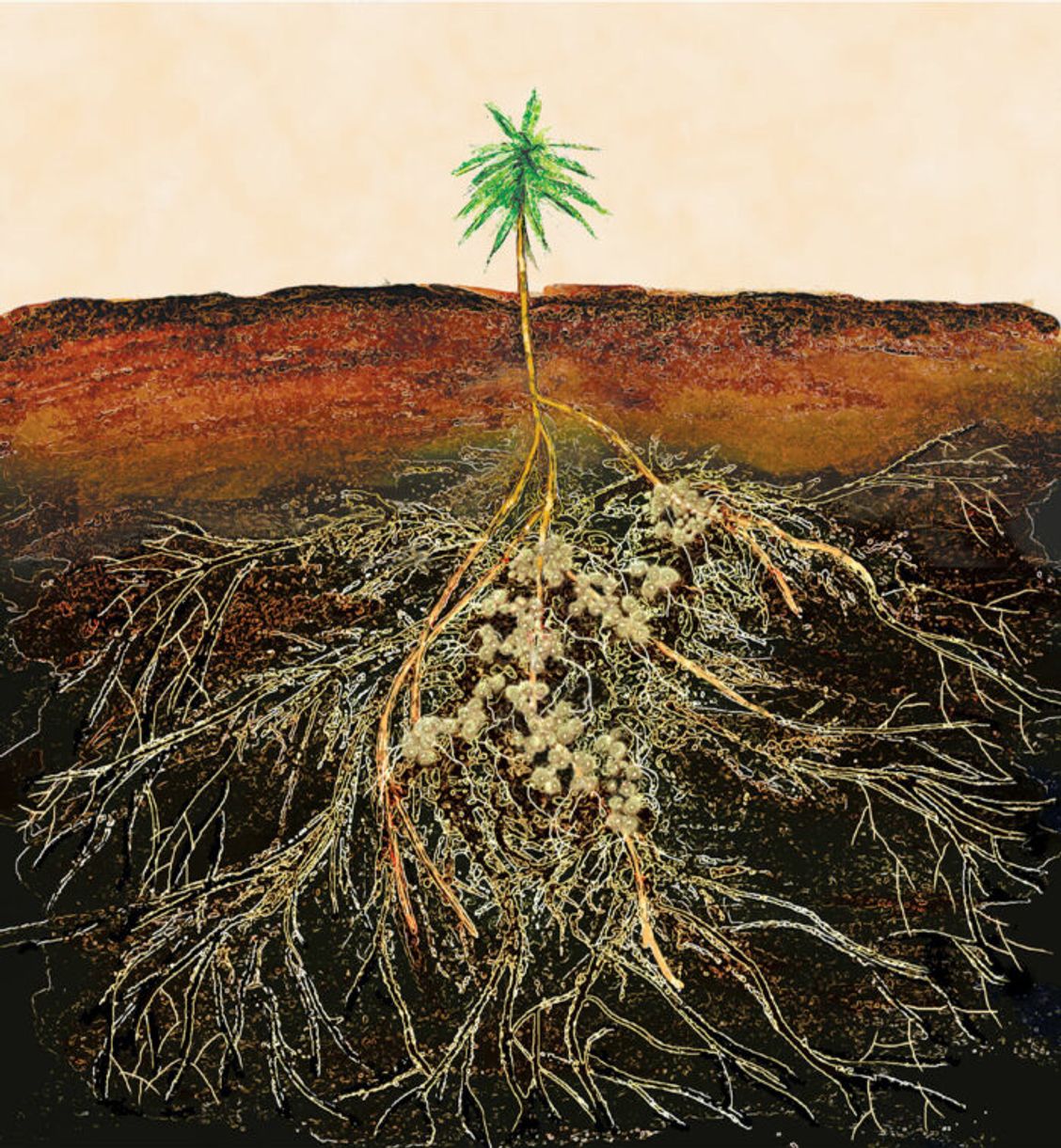A mycorrhiza is a symbiotic association between a Fungus and the roots of a Vascular plant. According to the U.S. Department of Agriculture, this relationship is a form of Symbiosis that is mutualistic, meaning both organisms benefit from the interaction. Over 90% of all known land plant species form mycorrhizal relationships, making it one of the most common and ecologically significant interactions in terrestrial ecosystems U.S. Department of Agriculture.
The primary benefit for the plant is a greatly enhanced ability to absorb water and essential mineral nutrients, particularly phosphorus and nitrogen, from the soil. The fungal partner extends its network of fine filaments, called hyphae, far into the soil, acting as an extension of the plant's root system and accessing resources that would otherwise be unavailable. In return, the plant supplies the fungus with carbohydrates, such as glucose and sucrose, produced through Photosynthesis Encyclopædia Britannica.
Types of Mycorrhizae
Mycorrhizae are broadly classified into two main types based on the way the fungus interacts with the plant's root cells: ectomycorrhizae and endomycorrhizae.
Ectomycorrhizae (ECM)
In ectomycorrhizal associations, the fungal hyphae do not penetrate the plant's root cells. Instead, they form a dense sheath, or mantle, around the outside of the root tips. From this mantle, a network of hyphae called the Hartig net grows into the root, extending between the cortical cells but not breaching the cell walls. This Hartig net is the primary site of nutrient exchange between the two partners. ECM associations are common in woody plants, including trees like pine, oak, birch, and fir, and are typically formed by fungi belonging to the phyla Basidiomycota and Ascomycota. Many of these fungi produce visible fruiting bodies, such as mushrooms and truffles Encyclopædia Britannica.
Endomycorrhizae
Endomycorrhizal fungi penetrate the cortical cells of the plant root. This is the more common type of mycorrhizal association. There are several forms of endomycorrhizae, the most widespread being arbuscular mycorrhizae.
Arbuscular Mycorrhizae (AM)
Arbuscular mycorrhizae are the most prevalent type, found in approximately 85% of all plant families, including most agricultural crops like wheat and corn. The fungi involved belong to the phylum Glomeromycota. AM fungi penetrate the cell walls of the root cortex and form highly branched, tree-like structures called arbuscules inside the cells. These arbuscules are the primary site of nutrient exchange. The fungi do not form a dense external mantle like ECM fungi, but their hyphae extend extensively into the surrounding soil U.S. Department of Agriculture.
Other Endomycorrhizal Types
- –Ericoid Mycorrhizae: Found in plants of the heath family (Ericaceae), such as blueberries and rhododendrons. The fungus forms dense coils of hyphae within the plant's epidermal cells, enabling the plants to thrive in acidic, nutrient-poor soils.
- –Orchid Mycorrhizae: This association is essential for the life cycle of orchids. Orchid seeds are extremely small and lack the nutrient reserves (endosperm) to germinate on their own. The mycorrhizal fungus provides the developing seedling with the necessary carbon and nutrients until it can photosynthesize for itself
U.S. Forest Service.
Mycorrhizal Networks
The underground hyphae of mycorrhizal fungi can connect the root systems of multiple individual plants, sometimes of different species. This creates a common mycelial network (CMN), often referred to colloquially as the "Wood Wide Web." These networks can facilitate the transfer of water, carbon, nitrogen, and other nutrients between connected plants. According to research highlighted by Yale Environment 360, these networks may also transmit chemical signals that can, for example, warn neighboring plants of insect attacks, allowing them to mount defenses.
Evolutionary History
The mycorrhizal symbiosis is ancient. Fossil evidence, particularly from the Rhynie chert in Scotland, shows that fungi were forming arbuscular mycorrhiza-like associations with the earliest land plants over 400 million years ago. A 2018 study in Nature Communications suggests that this partnership was fundamental to the colonization of land by plants. The fungi likely helped early plants, which had rudimentary root systems, to extract essential nutrients from the poor mineral soils of the Paleozoic era, facilitating the greening of the continents and the evolution of terrestrial ecosystems.
